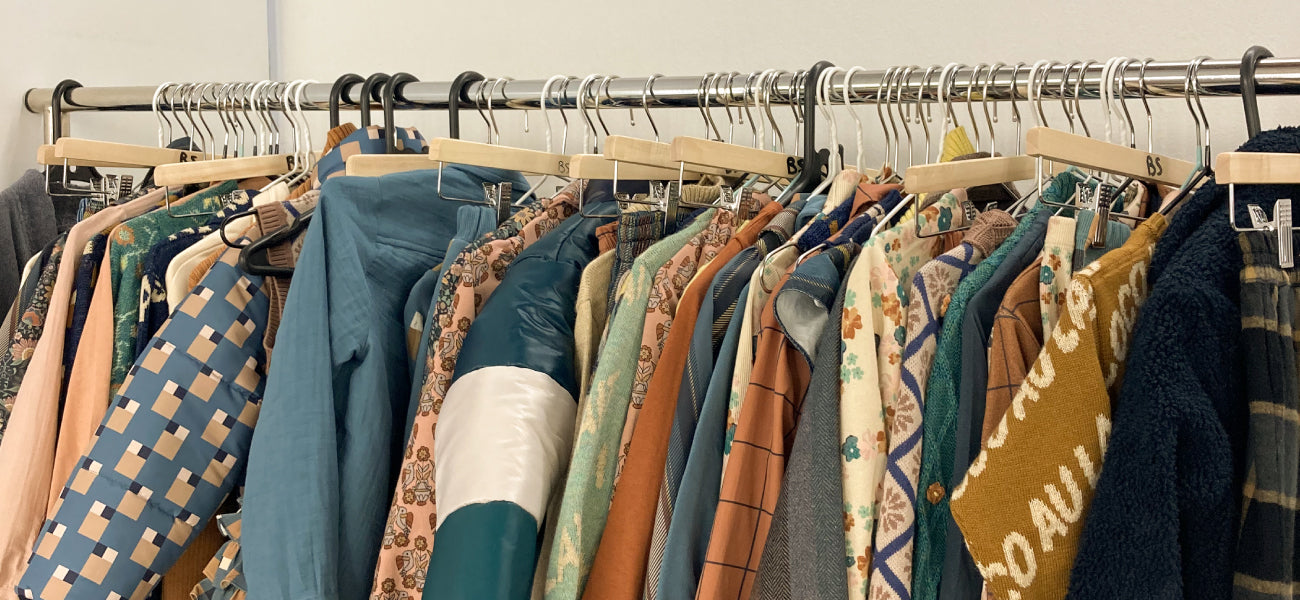
What is the best way to wash toddler clothes?
Are you struggling to find the best ways to keep your toddler's clothes clean while protecting their delicate skin? Caring for children's clothing goes beyond basic washing. It involves understanding fabric types, effectively removing stains, and preserving the quality of these precious garments.
Here's a comprehensive guide to washing children's clothes with safety and sustainability in mind.
Understanding fabric types in kids' clothing
The journey of washing your child's clothes is more than just separating colors or setting the right cycle. It's about tailoring care for the different fabric types prevalent in their wardrobe. Each material requires a customized approach to ensure not only cleanliness, but also longevity. Let's delve into the intricacies of caring for various fabrics commonly found in children's clothing to sustain their freshness and quality.
Caring for cotton and linen
Cotton and linen, timeless in children's fashion, grace our little ones' closets. These natural fibers are durable and require meticulous care. Here are some tips for caring for these fabrics:
- Separate light and dark colors: Before washing your children’s clothes, separate light cotton and linen items from darker ones to prevent color bleeding and ensure each item retains its original shade.
- Check for stains: Inspect garments for stains and pre-treat with gentle stain removers or natural solutions to prevent stains from embedding in the fabric.
- Gentle washing routines: Choose baby-specific or gentle detergents without harsh chemicals for fabric softness, using a moderate temperature on a delicate cycle. Air-dry to maintain shape and avoid shrinkage. Iron with moderate to high heat on slightly damp fabric to smooth creases.
- Store properly: Store in a well-ventilated, dry area. Avoid plastic bags or damp environments to prevent the growth of mold or mildew.
Washing wool and delicate materials
The realm of wool and delicate fabrics reveals a need for special attention and gentle care. Maintaining the softness, shape, and comfort of these garments requires a departure from standard machine washing.
Here are some important tips for washing these delicate garments:
- Hand wash gently: Use cold water and a mild detergent formulated for delicate fabrics, agitating carefully without rubbing or twisting to prevent damage.
- Rinse and dry gently: Rinse thoroughly in cold water, avoiding excessive wringing. Pat dry with a towel to remove excess water and reshape before air drying flat.
- Handle with care: Avoid direct sunlight and heat; opt for low-heat ironing with a press cloth if necessary; and store folded in breathable containers to maintain shape and prevent damage.
Handling synthetic fabrics
In this era of innovation, the world of children's fashion has been transformed by synthetic fabrics such as polyester and nylon. Their unmatched durability and ease of care have made them a staple in our little ones' wardrobes. But to maintain their vibrant appeal and longevity, these fabrics require a nuanced and expert approach.
- Choose the right wash cycle: Select a delicate cycle and use detergents specifically formulated for synthetics to maintain vibrancy and durability while preventing wear and tear.
- Watch the temperature: Avoid high heat when drying or ironing, as it can distort the shape and shine of the fabric. Select lower heat settings or air drying to preserve synthetic fabrics.
- Store with care: Proper storage is critical to preserving the appeal of synthetic fabrics. Fold garments neatly and store them in a cool, dry place out of direct sunlight. Avoid overcrowding closets to prevent creasing or stretching.
Pre-treatment and stain removal
At Coco Au Lait, we recognize the challenges of maintaining your child's garments. Kids are prone to messy adventures, from mud splashes to chocolate indulgences. Here are our exclusive stain-fighting secrets.
Identifying common stains in kids' clothing
Toddler clothing comes with a variety of stains, from food to mud, blood, and pen or grass stains. Each stain requires specific treatments and prompt action for effective removal while preserving fabric quality.
Safe pre-treatment solutions
When it comes to keeping your toddler's clothes fresh and stain-free, selecting the right pre-treatment solution is key. Act quickly when stains are discovered to prevent them from setting, especially if you wash clothes infrequently. Stain wipes can be a lifesaver by preventing stains from becoming deeply embedded, thus avoiding potentially extensive damage.
Once you have begun pre-treatment, continue with targeted stain removal steps tailored to the specific type of stain on your children's clothing. This proactive approach ensures that you're approaching the stain promptly and using appropriate methods, increasing the likelihood of successful removal without compromising fabric integrity.
Techniques for stubborn stains
Stubborn stains on children's clothing, such as ink, grass, food, mud, blood, or oil and grease stains, require special treatments for effective removal without compromising fabric integrity.
Washing techniques for toddler clothes
Washing kids’ clothes requires finesse. Every step, from machine settings and detergent selection to delicate handwashing and accommodating sensitive skin, impacts garment quality.
Machine washing settings and detergents
Machine settings and detergent choices significantly impact fabric longevity. Use mild detergents and gentle cycles to preserve garment texture and color.
Hand washing delicate items
Handwashing delicate items like lace or fine knits ensures their longevity. Employ lukewarm water and mild soap, gently squeezing excess water.
Adjusting washing methods for sensitive skin
For sensitive skin, rinse clothes thoroughly and avoid harsh chemicals or fragrances. Consider double rinsing to eliminate detergent residues. Adapting washing techniques for sensitive skin involves hypoallergenic detergents and skip-fabric-softener options, prioritizing comfort, and skin health for your little one's clothing care routine.
Drying and preserving the quality of kids’ clothes
Effective drying techniques are critical to preserving fabric quality and preventing shrinkage and color fading. Ironing tips and strategic storage also go a long way toward ensuring garment longevity.
Effective drying techniques
Choose air-dry or low-heat settings in the dryer to prevent shrinkage and color fading.
Avoiding shrinkage and color fading
Prevent over-drying to retain softness and texture. Immediately remove garments from the dryer to prevent creasing.
Tips for ironing and storage
Iron at a low temperature to prevent damage and use a press cloth for added protection. Store clothes in a cool, dry place to keep them fresh, and use breathable garment bags or drawers to prevent moisture buildup. These practices will help ensure the longevity and vibrant colors of your children's essentials.
Safety considerations in washing kids’ clothes
Prioritize hypoallergenic and child-safe laundry products to mitigate allergy and sensitivity risks, ensuring your child's comfort and safety.
Choosing hypoallergenic and child-safe laundry products
Choose detergents and fabric softeners that are formulated specifically for sensitive skin and are free of harsh chemicals and fragrances. Look for labels that indicate suitability for use by children.
Addressing allergies and skin sensitivities
Select dermatologist-tested formulas and incorporate a second rinse cycle to minimize skin reactions. A second rinse cycle can effectively remove residual detergent, further protecting against skin reactions.
By taking these precautions, you can create a laundry routine that prioritizes your child's well-being and minimizes the risk of allergic reactions or discomfort.
Eco-friendly washing practices
Embrace eco-friendly laundry products and energy-efficient methods to align with Coco Au Lait's sustainability commitment.
Using environmentally safe laundry products
Use biodegradable and environmentally safe laundry products to minimize the chemical impact on water systems. Choose detergents labeled “eco-friendly” or “plant-based” to reduce environmental impact.
Energy-efficient washing and drying methods
Opt for cold water cycles and air-drying or low-heat settings to conserve energy.
Remember, each garment has unique care needs, so follow care instructions carefully.
With the right care, you can keep your toddler's wardrobe fresh, clean, and safe, ensuring their comfort and your peace of mind.
Stay connected with Coco Au Lait for more insights on children's clothing care and longevity tips!


